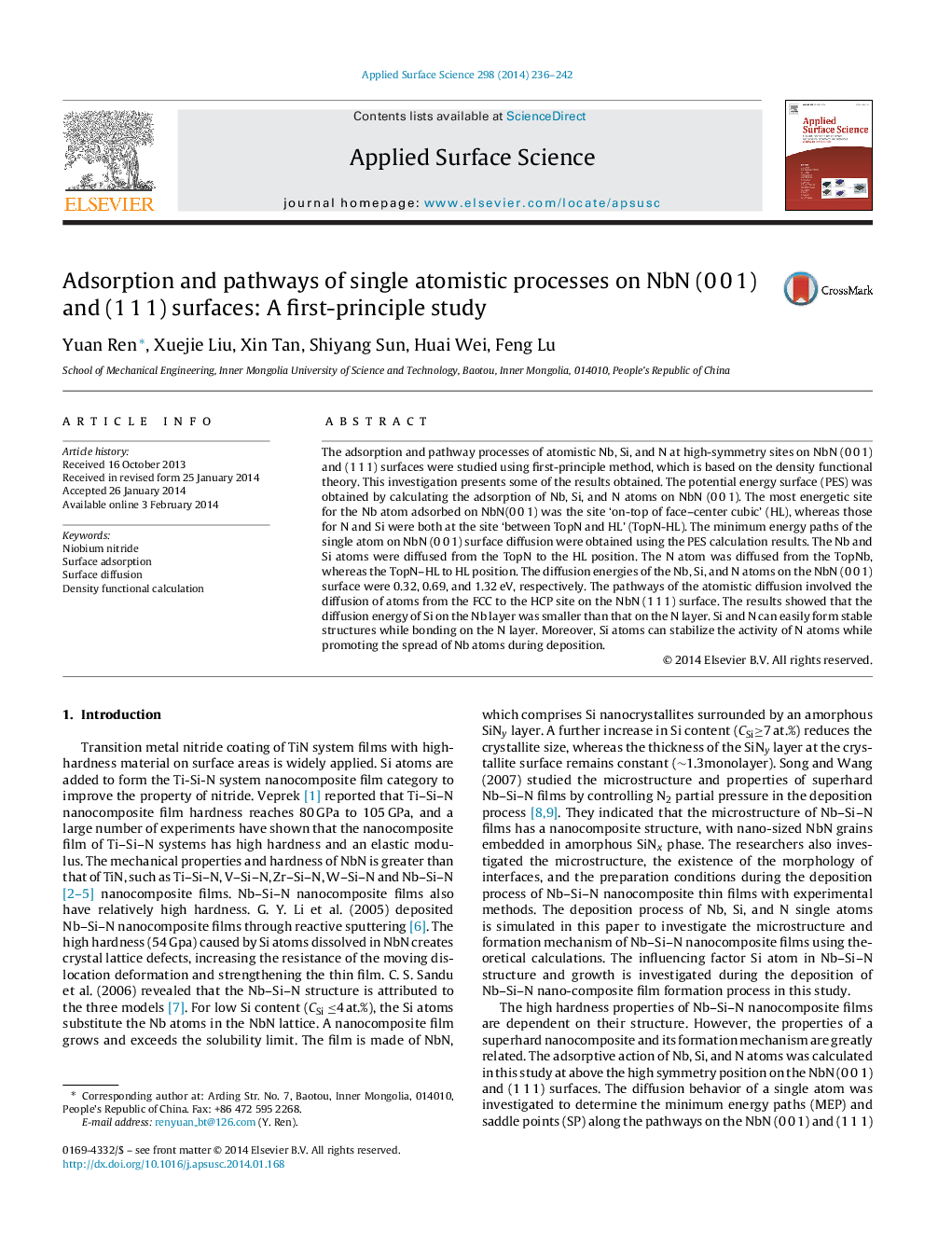| Article ID | Journal | Published Year | Pages | File Type |
|---|---|---|---|---|
| 5351017 | Applied Surface Science | 2014 | 7 Pages |
Abstract
The adsorption and pathway processes of atomistic Nb, Si, and N at high-symmetry sites on NbN (0Â 0Â 1) and (1Â 1Â 1) surfaces were studied using first-principle method, which is based on the density functional theory. This investigation presents some of the results obtained. The potential energy surface (PES) was obtained by calculating the adsorption of Nb, Si, and N atoms on NbN (0Â 0Â 1). The most energetic site for the Nb atom adsorbed on NbN(0Â 0Â 1) was the site 'on-top of face-center cubic' (HL), whereas those for N and Si were both at the site 'between TopN and HL' (TopN-HL). The minimum energy paths of the single atom on NbN (0Â 0Â 1) surface diffusion were obtained using the PES calculation results. The Nb and Si atoms were diffused from the TopN to the HL position. The N atom was diffused from the TopNb, whereas the TopN-HL to HL position. The diffusion energies of the Nb, Si, and N atoms on the NbN (0Â 0Â 1) surface were 0.32, 0.69, and 1.32Â eV, respectively. The pathways of the atomistic diffusion involved the diffusion of atoms from the FCC to the HCP site on the NbN (1Â 1Â 1) surface. The results showed that the diffusion energy of Si on the Nb layer was smaller than that on the N layer. Si and N can easily form stable structures while bonding on the N layer. Moreover, Si atoms can stabilize the activity of N atoms while promoting the spread of Nb atoms during deposition.
Related Topics
Physical Sciences and Engineering
Chemistry
Physical and Theoretical Chemistry
Authors
Yuan Ren, Xuejie Liu, Xin Tan, Shiyang Sun, Huai Wei, Feng Lu,
